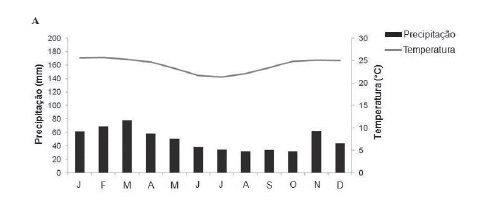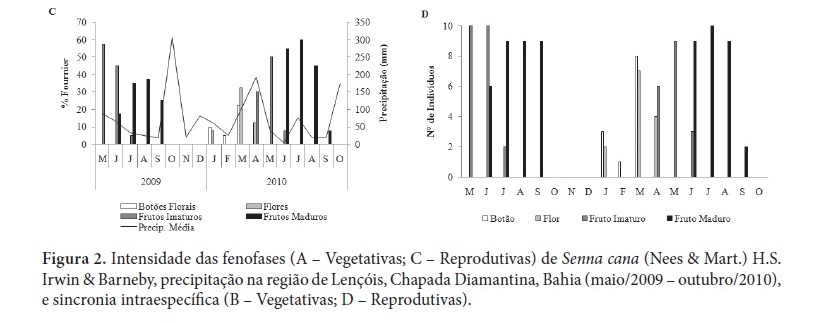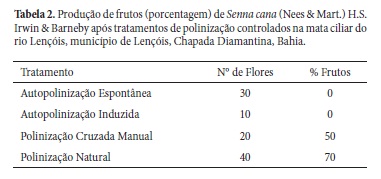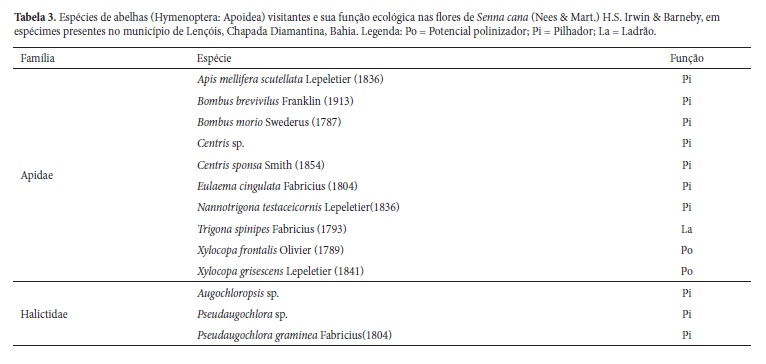The present work evaluated the importance of the phenological strategies of Senna cana in attracting floral visitors and pollinators in an riparian forest along the Lençóis River, in Chapada Diamantina, Bahia, Brazil. Vegetative and reproductive phenological observations (leaf fall, leaf flushing, flowering, and fruiting) were made on a monthly basis among a group of 10 individuals. The floral biology patterns observed included: anthesis, duration of the flowers, stigma receptivity, pollen viability, and the presence of osmophores and pigments that reflect UV light. Reproductive mechanisms were examined by testing manual and natural self-pollination as well as cross-pollination. Visitors and pollinators were identified, and the time, duration, and frequency of their visitation, as well as their behavior, were noted. Senna cana is an episodic evergreen species showing seasonal and highly synchronous reproductive events (intermediate flowering after a rainy period, and long fruiting during the dry period). These flowering characteristics, in addition to the syndrome of melittophily, are important strategies for attracting floral visitors (including Xylocopa frontalis and X. grisescens, which are potential pollinators). The self-incompatibility and maximization of fruit production through cross-pollination represent reproductive mechanisms favored by the phenological strategies and the pollination syndrome demonstrated by this species.
Fabaceae; Melittophily; Seasonality; Synchrony

 Phenological strategies of Senna cana (Nees & Mart.) H.S. Irwin & Barneby (Fabaceae: Caesalpinioideae) as efficient mechanisms for attracting pollinators
Phenological strategies of Senna cana (Nees & Mart.) H.S. Irwin & Barneby (Fabaceae: Caesalpinioideae) as efficient mechanisms for attracting pollinators









